March Program Report: The Remarkable Collection of the mim Museum, Beirut, Lebanon, presented by Philip Persson
Overview by Andy Thompson, MSDC Secretary

Phil Persson introduced his talk as having originated from a conversation he had with the mim Museum’s founder, Salim Edde, “a gentleman who truly has put together one of the best mineral collections in the world.” Yet, despite having created this wonderful museum over a decade ago and its having many of the world’s best minerals displayed in a conceptually interesting way, “it is still pretty unknown among a lot of collectors.”
The purpose of Phil’s talk was to give an overview of the collection and the museum. He also wanted “specifically to focus on individual specimens in the collection and what makes them interesting and noteworthy in my opinion.”
Readers: The purpose of this article is to provide a synopsis to encourage you to go to MSDC’s YouTube channel so you can experience Phil Persson’s presentation first hand. Click on the link HERE which takes you to his talk which lasts a little under one hour.
Background of the mim Museum
Phil introduced his audience to the mim Museum as follows:
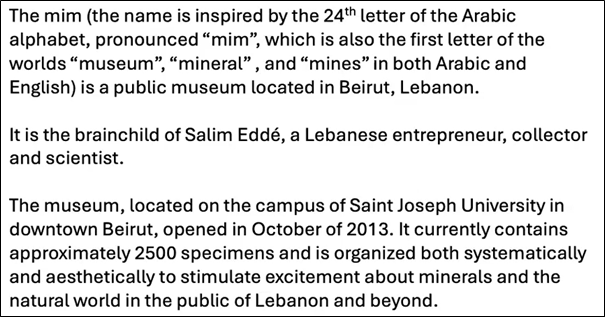
Phil described the mineral collection as organized systematically and aesthetically. “So it is organized by the Strunz and Dana systems of mineral classification but also by groupings of minerals by locality and aesthetics.” Salim Edde’s whole concept was to help the visitors experience an excitement about minerals and the natural world. He wanted the people of Lebanon and those throughout the world to be able to share this powerful engagement with these miracles of nature. The focus of the museum is to display not just some examples of minerals, but rather to allow visitors to encounter the world’s very best examples of each species of minerals.
A Sampling of Phil’s Selected Minerals of the mim Museum
Phil began his slide show of almost four dozen of his favorites by showing photos and texts describing their characteristics, and why he found each of them so interesting.
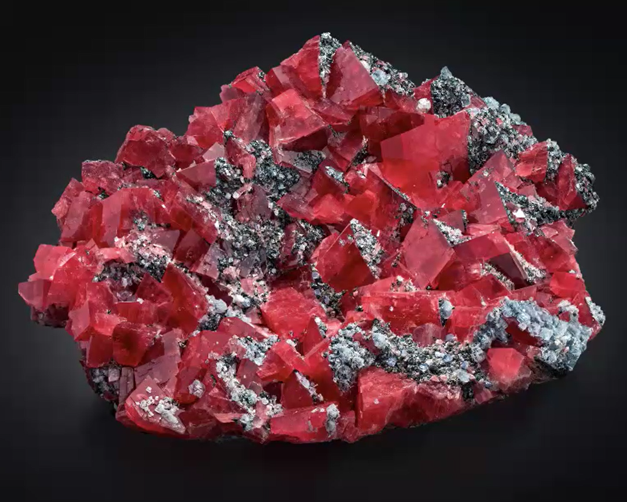
He began his tour with “Big Red,” a rhodochrosite, nearly three feet across, which stops visitors in their tracks. “Aesthetically it is really stunning.” For each of the minerals, Phil provided interesting details about its discovery, characteristics and aspects he found particularly noteworthy. Below he explains why this is “one of the world’s great rhodochrosite specimens.”
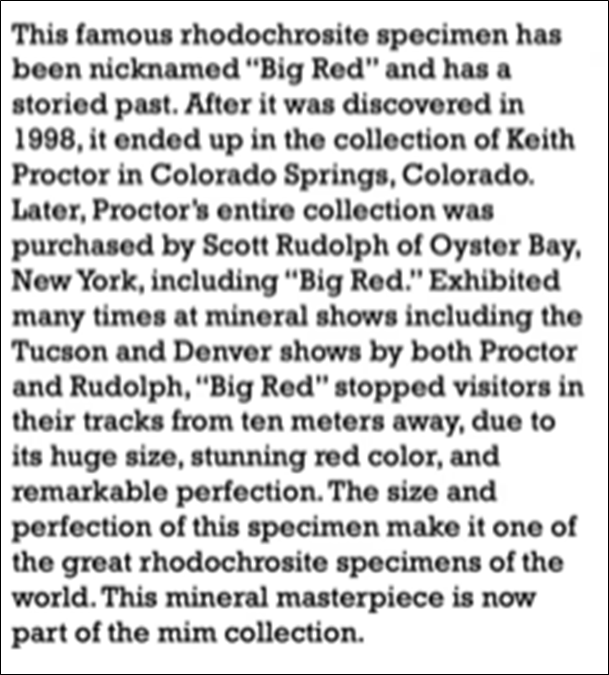
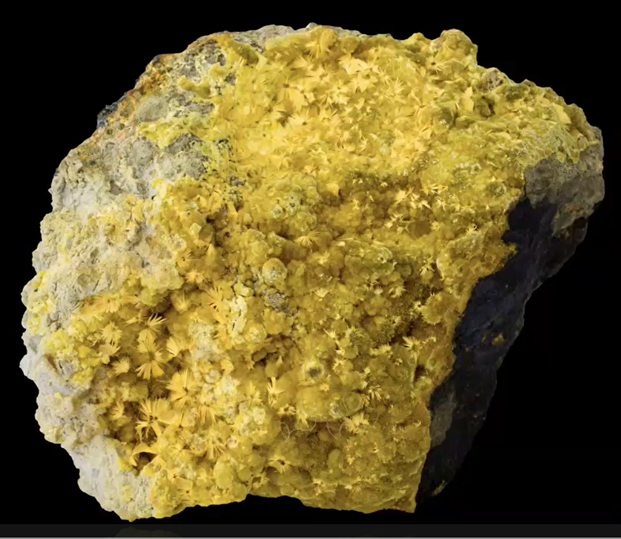
The golden yellow oursinite on uraninite above is probably the world’s best example of oursinite on uraninite. It is from the Shinkolobwe mine, famous for supplying the uranium for the Manhattan Project.
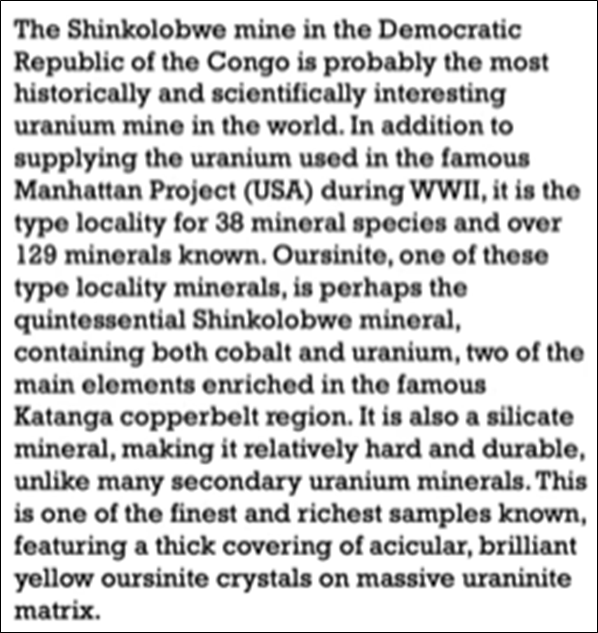
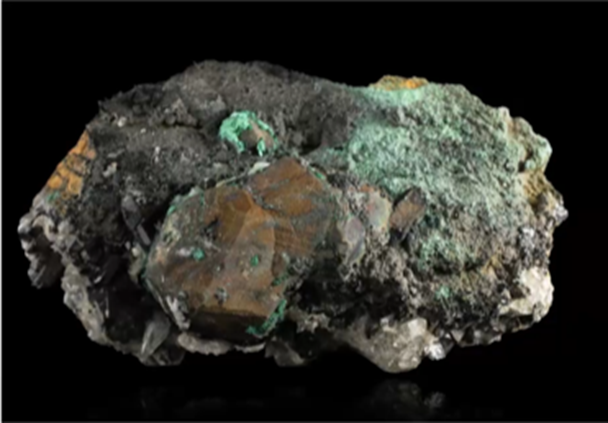
Phil said that the bornite specimen pictured above is actually one of his favorites of all the minerals recently acquired by the mim Museum. Although bornite is a common copper ore mineral found throughout the world, this “is arguably one of the world’s best bornite specimens.” The euhedral bornite crystals, as noted below, are quite rare. He explained that “euhedral” crystals are rare in that they are “well formed” with sharp edges, distinct faces and formed without interference from other growing crystals.
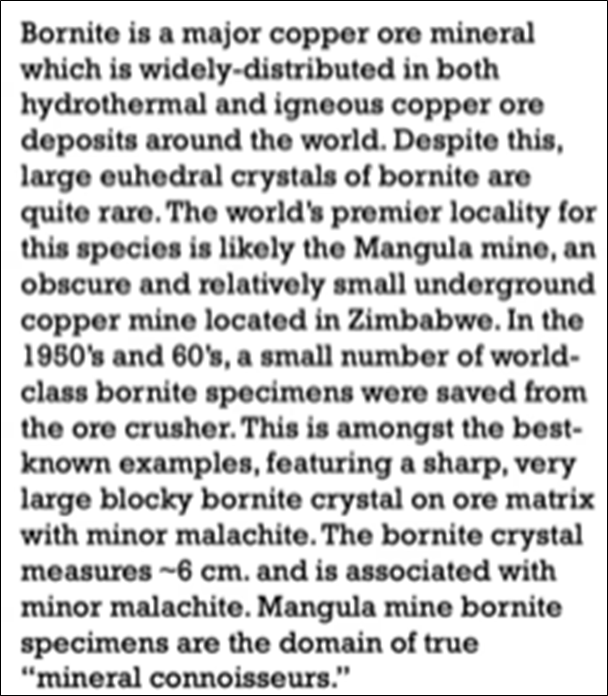
Another factor he shared with his audience was a little-known factor that for him contributes to this bornite’s attractiveness. Phil said that as a long-time professional collector, his appreciation for “weird” mining locations has grown. This specimen was brought out of the now closed Mangula mine in Zimbabwe in its early days about 70 to 80 years ago. Many of today’s collectors would never have heard of that underground copper mine. So knowledge and appreciation of its specimens would be off the beaten paths of most collectors.
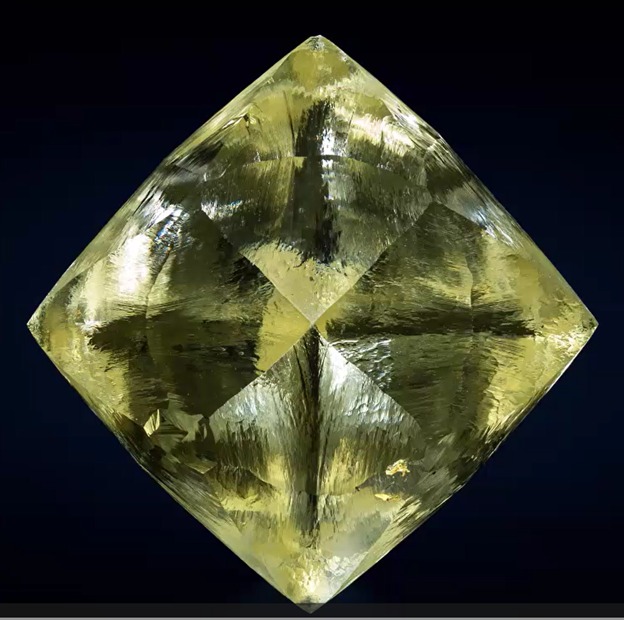
Phil explained that the large 92-carat diamond crystal pictured above is rare for several reasons. First, it “escaped the forces of nature” and survived undamaged on the journey in kimberlite from approximately 150 kilometers below the surface with its very high pressures required for its formation. Second is that Salim Edde rescued it from the fate of most large diamonds, namely being cut into smaller crystals destined for the commercial jewelry market.
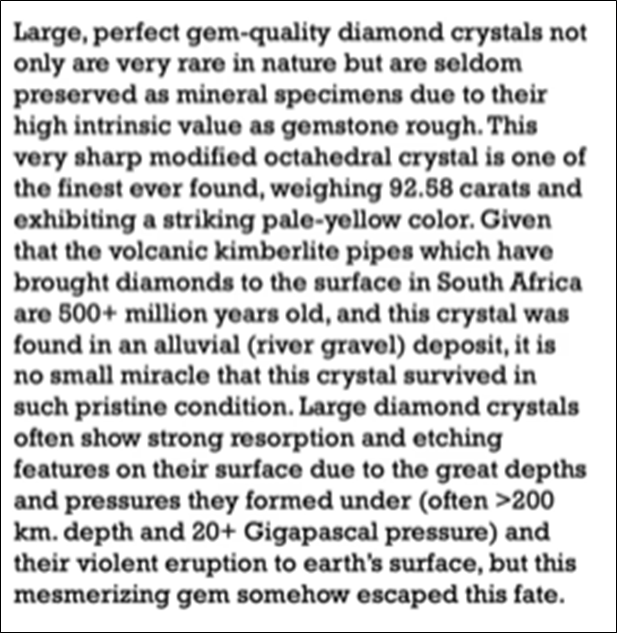
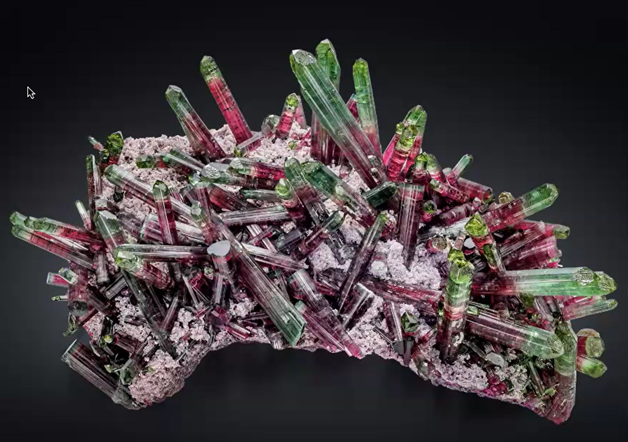
This elbaite tourmaline and lepidolite specimen, like many of the minerals Phil shared with his audience, was highlighted because of its physical characteristics which exhibit tell-tale signs of the formation process which brought it to its present form.
This specimen which was recently discovered by knowledgeable miners who, unlike those miners who found these specimens many decades ago, recognized its desirability and did not use a high pressure hose to remove the mud and thereby destroy its fragile crystals.
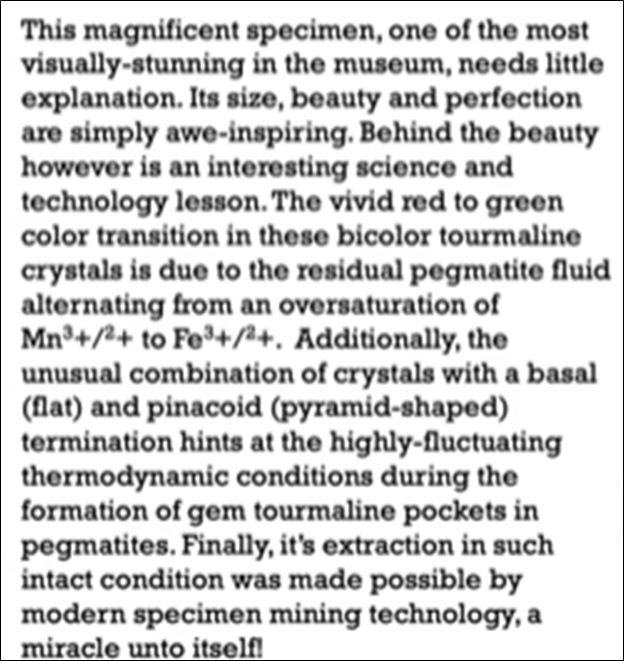
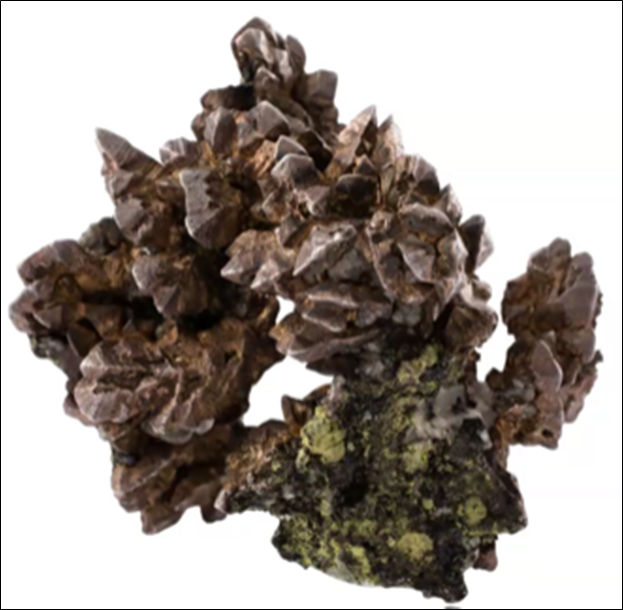
Phil said he had a strong love of northern Michigan minerals and this native silver from the Keweenaw Upper Peninsula came out of the Kearsarge copper mine. He explained that back in the early 19th century, when the copper miners found silver crystals attached to copper, they commonly pried off the silver crystals and carried them home in their lunch boxes.
The particular mode of this silver specimen is that it has “spinel twins” and crystals sometimes known as “bear paw twins,” which are sharp tetrahexahedra crystals which sit atop a basalt and epidote matrix.
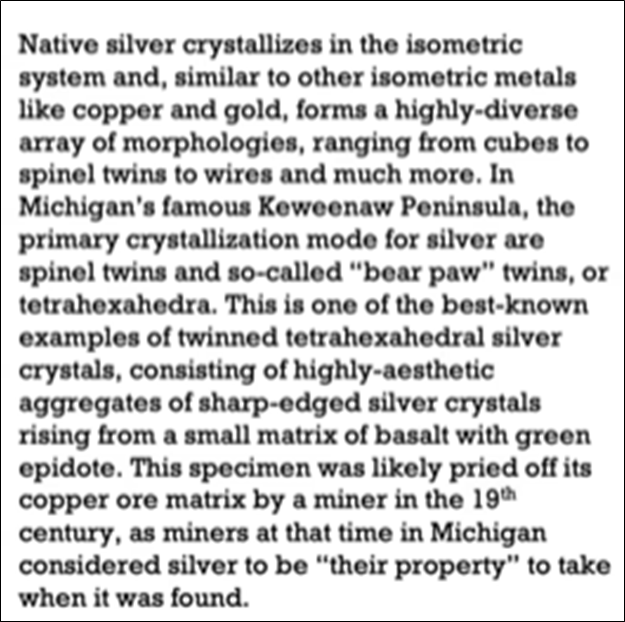
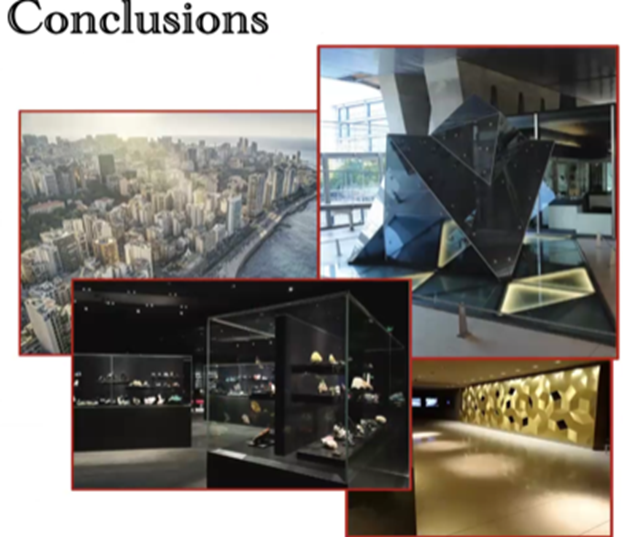
Summarized below are Phil's concluding remarks about the mim Museum’s engaging approach to earth science education, Mr. Salim Edde’s appreciation of its role in daily life, Beirut’s rich cultural heritage, and the mim’s staff hospitality toward visitors.
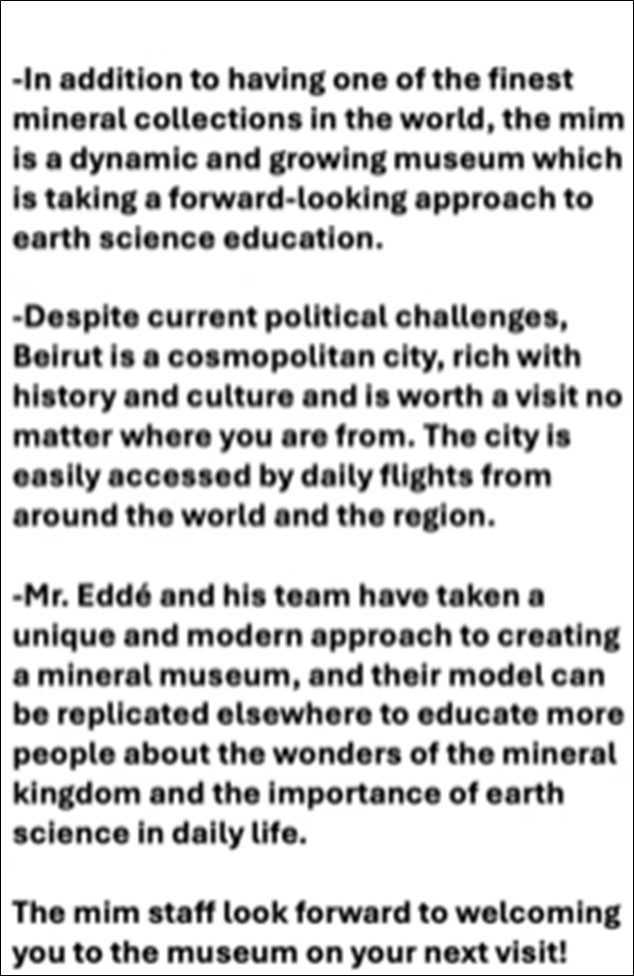
Q&A
Phil’s audience applauded his presentation on the mim Museum’s extraordinary mineral treasures. Listeners then peppered Phil with a wide range of questions including:
· why the museum is located in Beirut,
· the safety of its triple-story underground structure,
· Salim Edde’s generosity in providing personal tours and sharing photos of the museum’s mineral holdings,
· how Phil handles safety issues with radioactive minerals,
· and how to access Phil’s website, Persson Rare Minerals – Fine & Unusual Minerals for Collectors and Museums.
Kenny and Dan then thanked Phil for sharing his personal experiences in visiting the museum and his subsequent research on the exceptional mineral species he shared with his MSDC audience.
Readers: To gain access to the entire video of Phil Persson’s presentation, click HERE.
